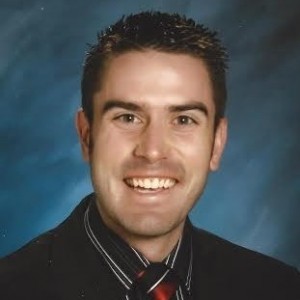Recently, Roger Quarles, executive director of the J.A. and Kathryn Albertson Foundation and former chief deputy on Tom Luna’s staff, announced that the Albertson Foundation would change course in its philanthropic giving by taking the bulk of its dollars elsewhere in community based projects.
The reason for the shift away from education seems to be due to an underlying frustration that teachers and schools just don’t seem to be adopting Albertson-fueled “innovation” wholesale across the state.
Quarles said in a recent Boise State Public Radio interview about the lack of schools adopting Albertson initiatives, “you have to look at that and go ‘fundamentally there’s some problems within that system.’”
Let me be clear: Albertson has done some terrific work in supplying schools and students with funds to pilot classroom technology, curriculum, and emerging instructional methods.
But let me also point out: Albertson has been equally complicit in building those exact same “fundamental problems” in Idaho’s education system that Quarles is concerned about.
For example, take Idaho’s longitudinal cradle to cadaver data tracking system: Idaho System of Educational Excellence (ISEE) and its companion, Schoolnet.
That system was developed to track student and teacher data in a uniform program across the state instead of the hodgepodge of systems each district was individually using. Except that millions of dollars and years later, ISEE/Schoolnet, like Victor Frankenstein’s monster, is still lying on the table waiting to be shocked into life.
The program has been such a colossal failure that the state actually paid out money to districts in 2014 to pay for whatever system they preferred since ISEE was such a total bust.
Schoolnet was so dysfunctional that Rep. Wendy Horman, (presumably exasperated at the incompetence) inquired at a 2013 committee meeting on the topic, “Is [Schoolnet] working anywhere, for any purpose, to improve education?”
The answer is, well, no. Not really. The data doesn’t appear in any sort of timely fashion that would allow teachers to evaluate the scores and impact their instruction.
In addition, as reported in both the Idaho Statesman and Idaho Ed News, when the data does finally make it into teachers’ hands, it often isn’t accurate. That’s an oops of million dollar proportions.
So how is Albertson equally complicit in this fundamental longitudinal data problem impacting our state?
Well, Albertson is responsible for funding nearly half of this multimillion dollar monster.
See, Idaho requested the money from the federal government to build this longitudinal data system first. That proposal was bluntly shut down because the project needed to be better thought out.
Said one glowering U.S. Dept. of Education federal grant reviewer of the plan in denying the money spigot, “Idaho could benefit from examining the successful models of several states and hiring a professional grant writer and some technical experts who could better inform the development of a better-conceived application to fund the work that the state so desperately needs.”
While such feedback should have tapped the brakes on the project, the state instead pushed the gas to the floor by asking the Albertson Foundation to cough up the cash.
Despite the warnings from the federal government, Albertson obliged to the tune of a $21 million dollar grant promise for the project.
Which is where Roger Quarles fits into this. When the Legislature caught whiff of the project’s total ineptitude, Supt. Luna dispatched then Chief Deputy Quarles to clean up the mess. It didn’t go well. Despite some “software CPR,” districts across the state jumped ship and started again using a hodgepodge of independent data systems; an outcome that is precisely the opposite of what this multimillion dollar project was designed to accomplish by instead streamlining data into a single uniform system.
But it gets better: Since that time, Quarles left his post as chief deputy to become the executive director of the Albertson Foundation.
One of his first acts as executive director was to break the Foundation’s promise to Idaho’s schools and students by withholding the final set of grant funds for ISEE/Schoolnet.
And to be fair, it was the correct decision; the writing was on the wall about ISEE/Schoolnet’s future. Even Pearson, the company hired to assist building the program, skipped town in the night with a communique that it will no longer work on the botched system.
But that outcome of disfunction is precisely the type of “fundamental problem” that Quarles places on the school system.
Sorry, but that fundamental problem has nobody to blame more than Albertson.
And perhaps it’s better that ISEE/Schoolnet remains in the lab on life support. Like Victor Frankenstein’s monster, some things just aren’t meant to be shocked into life.
Yet, Albertson’s decision to back out of its promise is telling; it precisely highlights the dysfunction caused when outside interest groups dabble in education policy.
Albertson’s continued financial commitment to bringing more outside interest groups like Teach For America (TFA) is a duplicate example of continued fundamental problems organizations like Albertson bring to Idaho.
So, sorry: Don’t place the blame for fundamental problems on Idaho’s schools without first checking the mirror.
Levi B Cavener is a special education teacher in Caldwell. He also manages the blog IdahosPromise.org where a larger version of this piece, including hyperlinks to primary sources, is available.

